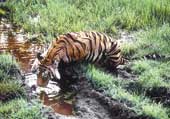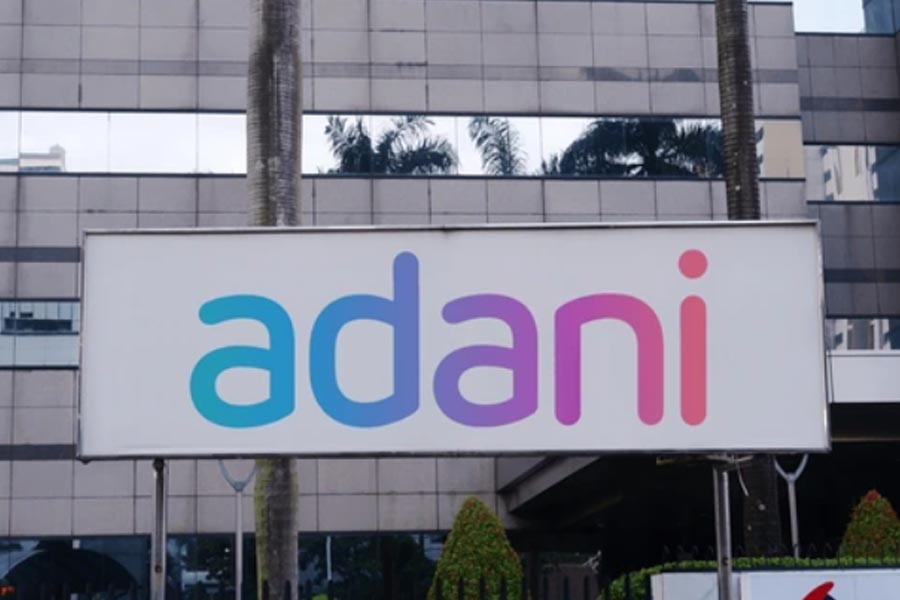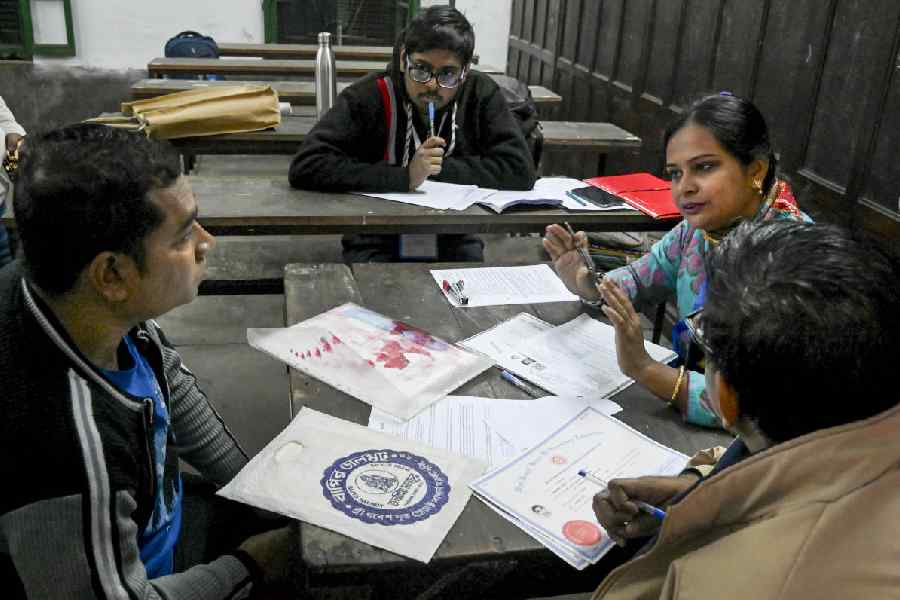 |
The sparkling blue water of Koena river that flows through the sal forest reserve in Saranda has taken a reddish hue. With most rivulets and streams drying up in summer, animals regularly line up along the banks of the river to drink water, little knowing that they are consuming industrial waste.
The three dozen-odd mini plants in Sundergar and Keonjhar districts in Orissa, where the river originates, have turned Koena into a dumping ground for iron and crusher plants. The Kiriburu-Meghahatuburu mines, subsidiaries of Steel Authority of India Limited (SAIL), are also guilty of disposing their toxic waste into the river.
The plants have no drainage system or dumping ground to flush out toxic wastes. The plant authorities have not bothered to construct check dams to prevent the release of wastes into the river.
Koena river flows through Saranda forest, covering approximately 83 km from its point of origin in Bhangoan (Orissa). Around 305 square kilometre of Saranda forest reserve fall under the catchment area of Koena.
Chief wildlife warden U.R. Biswas confirmed that Koena river water has become polluted in the past few years. ?The river takes on a reddish hue in Sundergar and Keonjhar districts, thanks to the industrial waste that is dumped into it. The water has become unfit for drinking,? says Biswas.
He said the authorities in Kiriburu-Meghahatuburu mines have been intimated about the pollution. ?They had been asked to refrain from dumping wastes into the river. We have also sent a report on the increasing pollution in Koena to the Union environment and forest ministry,? added Biswas.
He said SAIL had assured the state forest department that purifying plants would be installed within two to three years. ?The Centre has taken serious note of the fact that the wildlife in Saranda is under risk. Steps will be taken against plants polluting the river,? said Biswas.
Assistant conservator of Saranda forest T.K. Gagrai said apart from the flora and fauna in the forest, the fish in the river are facing a threat to their lives as the river bed has become polluted with deposits of iron.
?Clearing the toxic elements from the river water has become a principal issue. The polluted water has already killed the mahaseer fish population, which was found in abundance in Koena river. If the Saranda animals continue to drink water from the river, we will have no wildlife left. Most small rivers and tributaries in the forest dry up during summer, forcing the animals, including the elephants, and even the villagers to drink water from Koena river,? added Gagrai.
Gagrai said efforts are on to fence the banks of Koena so that animals don?t drink the river water. An inhabitant of Chhtonagra village, Pawan Mundari, said most animals in the forest were drinking water from the Lidirga swamps, which is a natural source of water in the heart of the forest.
Sources, however, pointed out that the situation would not have become so critical had the Saranda forest division constructed water holes across the length and breadth of the reserve. ?Natural water bodies in forests are vital for animals. Poisoning of Koena river would not have assumed such an alarming proportion had the forest had natural water holes,? the sources added.
Saranda forest is home to a wide variety of animals. The forest is the core area for the Singhbhum Elephant Reserve. While the state forest department takes steps to conserve Saranda wildlife, one can just hope that animals in the forest will not meet the same fate as the mahaseer fish.
Anupam Rana











